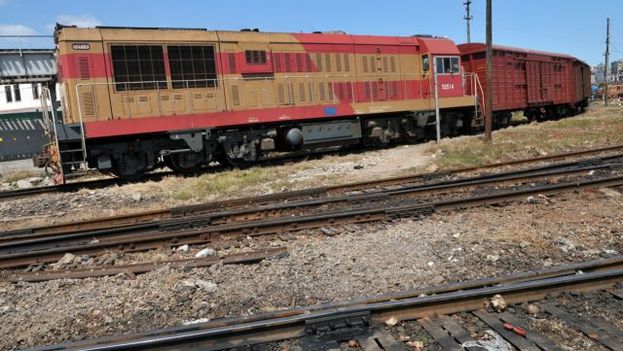
![]() 14ymedio, Yoani Sanchez, Generation Y, 29 January 2016 – My father is a train engineer. It has been decades since he drove a train, long years in which he hasn’t sounded the whistle of a locomotive while passing through a village with children running alongside the line. However, this still agile retiree originally from Matanzas still marks the 29th of January on the calendar and says “it is my day.” The day still smells of iron braking on iron, and has the rush of the platform, where some leave and others say goodbye.
14ymedio, Yoani Sanchez, Generation Y, 29 January 2016 – My father is a train engineer. It has been decades since he drove a train, long years in which he hasn’t sounded the whistle of a locomotive while passing through a village with children running alongside the line. However, this still agile retiree originally from Matanzas still marks the 29th of January on the calendar and says “it is my day.” The day still smells of iron braking on iron, and has the rush of the platform, where some leave and others say goodbye.
The date honors the guild established in 1975, during the finishing of the first stretch of the central line. At the celebration Fidel Castro operated a Soviet locomotive, a moment that is still a source of amusement among elderly train engineers. “Everything was ready and he didn’t even get the credit of making that mass move,” says an old conductor in his eighties. The event, more about politics than railroads, was enough to let the imposed anniversary go.
The 19th of November should be the date for those who carry the iron serpent circulating in our blood. The day the first rail link in Cuba was completed, between Havana and Bejucal, in 1837, should get all the credit to earn itself a celebration that goes beyond the fanfare of the politicians and the headlines of the official press. In those nearly 17 miles (27.3 kilometers) of the initial line, a lineage began that refuses to die.
Now, when I stand in front of the lines at La Coubre terminal in Havana and observe the disaster that is rail transport in Cuba today, I ask myself if the era of the “sons of the railroad” will come to an end. Old cars, unsafe, accidents, delays, long lines to buy a ticket, luggage thefts, the stench of the toilets… and an iron fence that isolates the platform and those going aboard from those who are saying goodbye.
The Cuban railroad died. There is not much to celebrate on this day.
